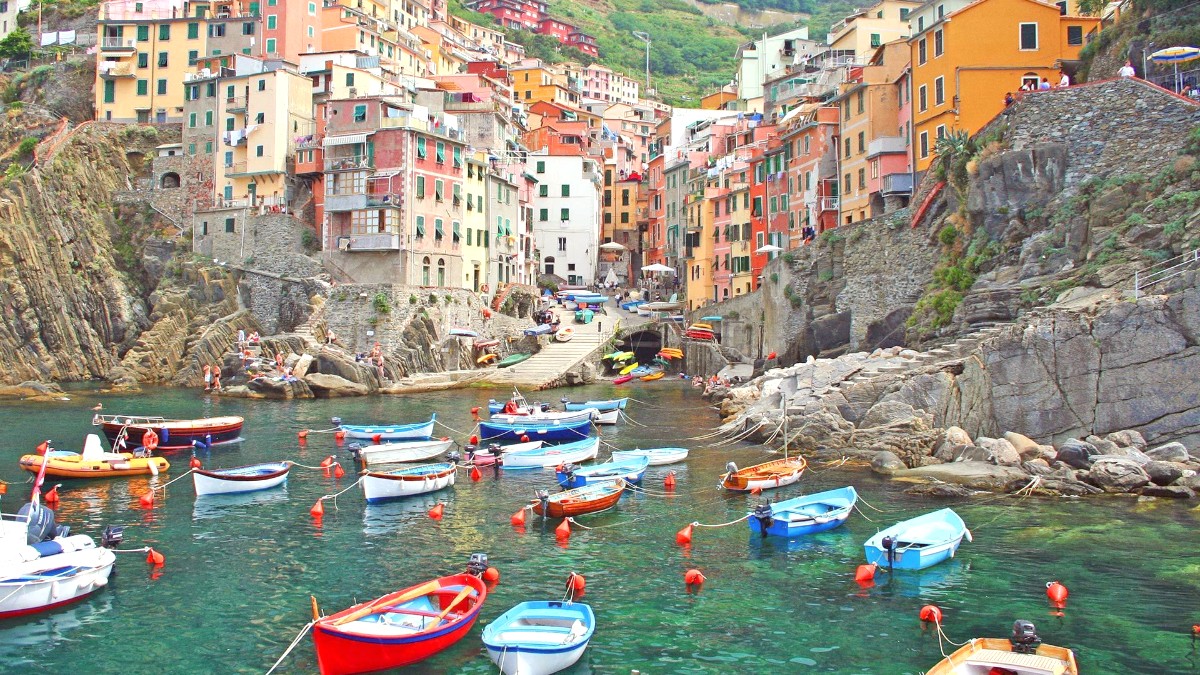
Liguria Piedmont And Valle Daosta, Italy
Ligurian cuisine arose from the necessity to utilize local produce effectively. The region's history, without vast agricultural plains or large-scale meat production, led to a reliance on olive oil, abundant herbs, terraced hillside vegetables, and plentiful seafood.
The cuisine emphasizes simplicity, prioritizing the quality of core ingredients over complex preparations. It has strong ties to peasant traditions and the maritime life of coastal communities.
Lunch is typically 1:00 PM - 2:30 PM. Dinner begins later, usually 7:30 PM - 9:30 PM. Many restaurants close between services.
A "coperto" (cover charge) of €1-€3 per person is common for bread and table service. A "servizio" (service charge) of 10-15% may also be added; if so, additional tipping is not customary.
Still (acqua naturale) or sparkling (acqua frizzante) Bottled water is customary. Espresso is consumed throughout the day, cappuccino mainly for breakfast.
The globally renowned basil pesto, traditionally served with trofie or trenette, often with potato and green beans.
Find it at almost any trattoria; look for "pesto fatto in casa" (homemade pesto).
Focaccia is a soft, airy, olive-oil-rich flatbread. Farinata is a savory chickpea flour pancake baked in a wood-fired oven.
Available at any local bakery (panificio) or "focacceria" and "farinaterie".
Acciughe (Anchovies) are prepared fried, marinated, or salted. Muscoli Ripieni (Stuffed Mussels) are a La Spezia tradition, slow-cooked in tomato sauce.
Find fresh anchovies at seafood restaurants; stuffed mussels at traditional trattorias.
A dense cake from chestnut flour, with pine nuts, raisins, and rosemary, often found in autumn.
Canestrelli are delicate, daisy-shaped shortbread cookies. Authentic Italian gelato from artisanal shops is a delightful treat.
La Spezia features upscale restaurants focusing on refined Ligurian cuisine and fresh seafood. Expect elegant ambiance and extensive wine lists. Reservations are usually recommended.
The most abundant dining choices, including Trattorie (casual, family-run, traditional dishes, generous portions) and Ristoranti (more formal, wider menus, moderate prices).
Find delicious and affordable meals at Pizzerias (pizza al taglio), Focaccerie, Paninoteche, and Mercato Ortofrutticolo stalls.
La Spezia's main daily market, Monday to Saturday. A sensory experience with fresh produce, seafood, local cheeses, and cured meats. You can find prepared foods here too.
Soak in the local atmosphere and discover regional specialties.
A section of the Central Market, offering a range of local products in a sheltered setting.
Explore local ingredients in comfort.
Diverse flavors.
Fresh and modern.
Aromatic spices.
Quick and tasty.
Halal options are very limited. No dedicated halal restaurants or certified food shops. Travelers should verify ingredients when dining out.
Self-catering with groceries from local supermarkets is a good choice.
Kosher options are very limited. No dedicated kosher restaurants or certified food shops. Travelers should verify ingredients when dining out.
Opt for self-catering, focusing on naturally compliant items.
Always inform your server about any allergies. Write down your allergies in Italian (e.g., "Sono allergico/an a..." - I am allergic to..., "Non posso mangiare..." - I cannot eat...).
Apps like HappyCow (vegetarian/vegan) or specialized gluten-free travel apps locate suitable restaurants. Research menus and reviews online beforehand.
A popular Ligurian experience. Learn to make authentic pesto from scratch using a mortar and pestle.
Broader classes on making focaccia, farinata, various pasta dishes, or seafood preparation.
Guided walking tours through La Spezia's markets and eateries. Sample local delicacies and discover hidden culinary gems.
A traditional eatery specializing in fried foods, notably mixed fried seafood (fritto misto). Often casual, takeout-style spots.
Great for a quick and delicious meal on the go.
A quintessential Italian experience. Purchase a drink (e.g., Spritz, local wine) in the early evening (6-8 PM) and receive complimentary snacks, from olives to a generous buffet.
Can serve as a light dinner. Many bars offer this.
Stay at locally owned B&Bs or guesthouses for genuine interaction.
Dine at family-run trattorias to experience authentic local cooking.
Purchase goods directly from local artisans at markets to support the community.
When dining, consider ordering a "primo" (first course, typically pasta or soup) and a "secondo" (main course, meat or fish) as a substantial meal.